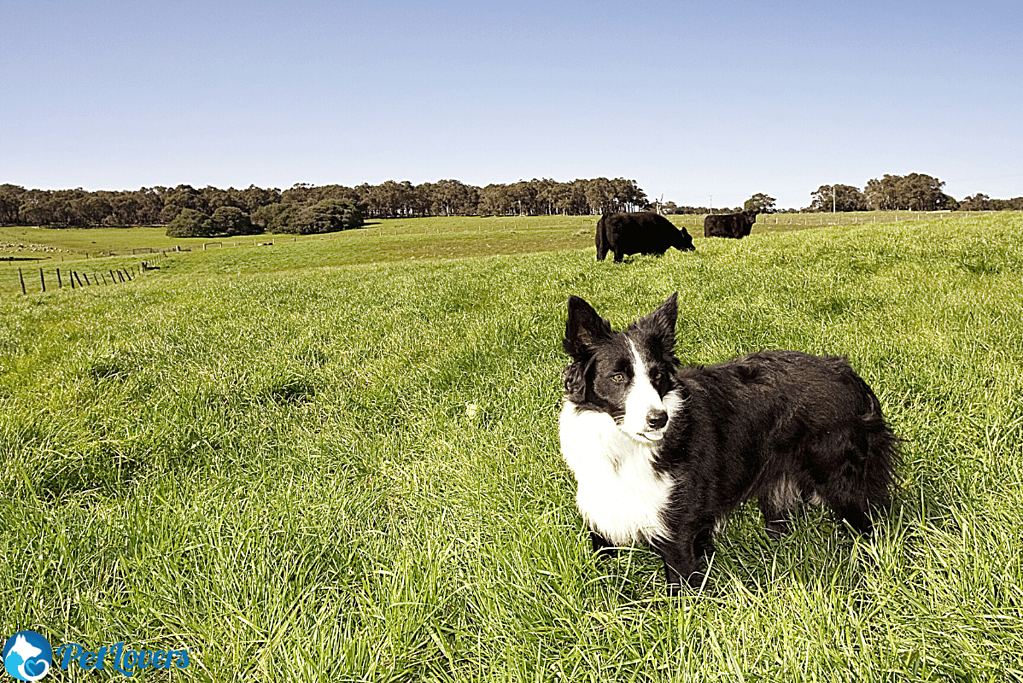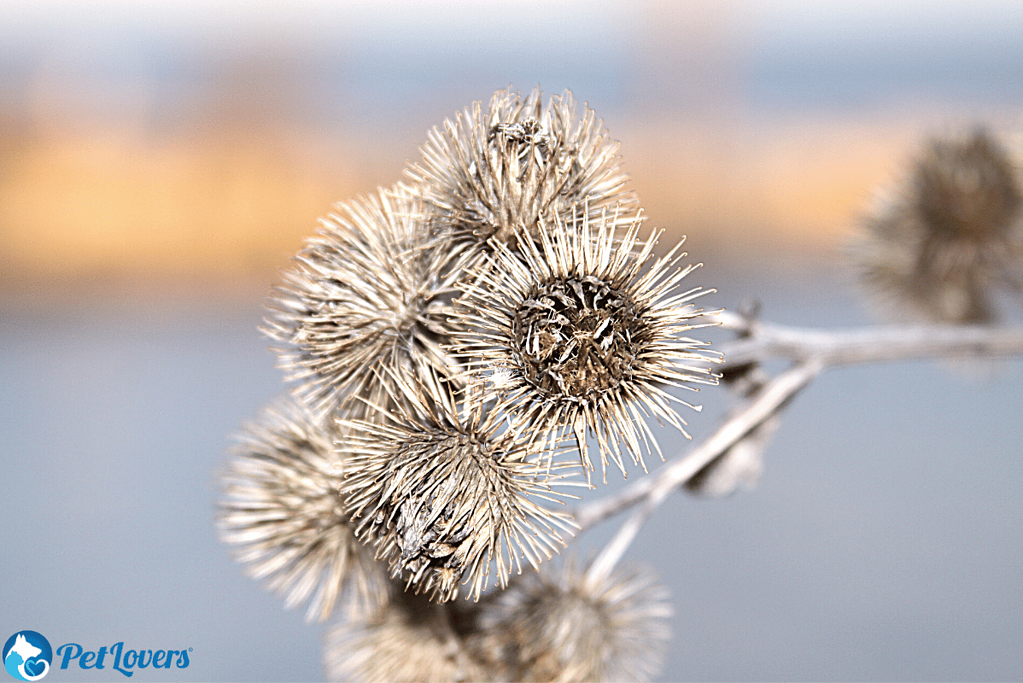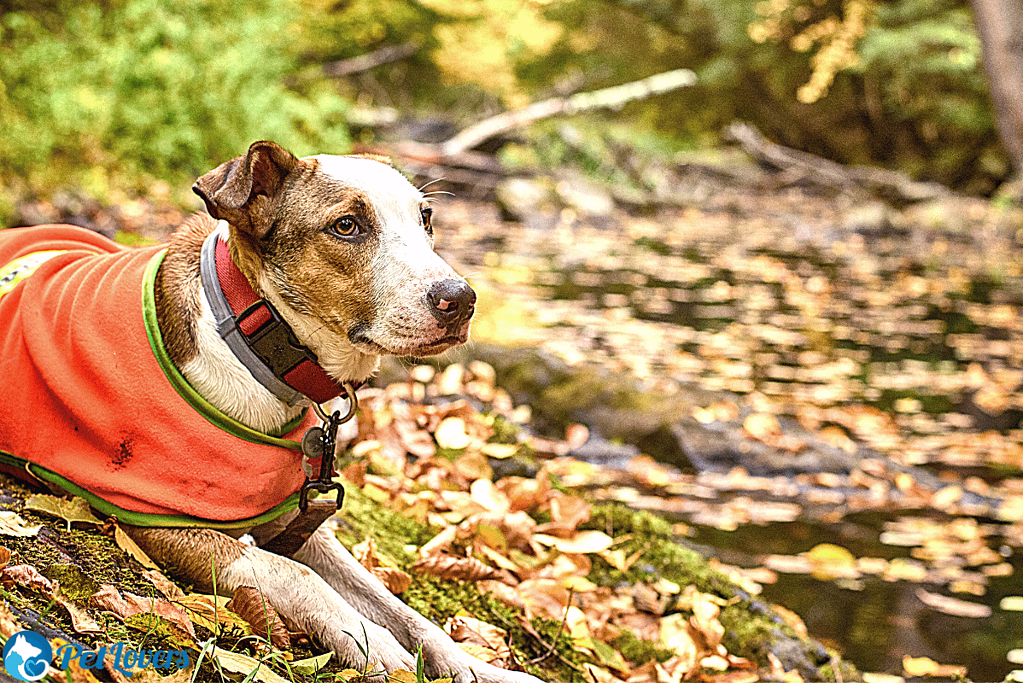Types Of Dog Brushes
Grooming your dog regularly helps minimize shedding, control where that loose hair falls, and improve the health of your dog’s

There’s nothing more enjoyable than taking your pooch for a walk or a hike, especially when you own a highly energetic breed like the Border Collie and Australian Shepherd. However, these follow some unpleasant experiences, such as getting burrs on your dog. Keep reading to learn how to remove burrs on dogs safely and how you can prevent this event from happening.
Table of Contents
Burrs are thorny flower heads or seed cases that plants use as dispersal vehicles. The size of burrs varies depending on the species.
Some species have tiny burrs that are barely noticeable, while some produce large and very prickly burrs. Similarly, some burrs attach to the surface, while others penetrate deeply and are painful.
As beneficial as burrs are for plants, humans and animals have a hard time dealing with them. This is because their prickly texture makes them cling to animal fur and human clothing.

Coming home after a joyful hike and finding your dog covered in burrs can be quite vexing, especially for pet parents who have no idea what burrs are. The mere idea of pulling them away from the fur bothers dog parents as it will be painful to the dog. Luckily, you can safely remove burrs from dog fur without inflicting any pain on your pooch.
While it may be tempting to brush your canine right away, it can make your job very difficult. What you need to do is carefully look for hidden burrs on your dog’s coat before brushing or scrubbing it.
This is because these actions can push the burrs deeper into the dog’s coat and become hard and painful to remove. Burrs can be hiding anywhere, from ears to paw pads to the tail base.
Therefore, make sure you search your pooch’s entire body. Moreover, as nipples and burrs look somewhat alike, be careful in this under area of your pet.
Disentangling the burrs from the fur will make your job effortless while also saving your dog from pain. You can use cooking or baby oil to detangle the burrs.
Drench the burr with cooking oil and leave for a few minutes. You can either use a brush to apply the oil or simply spray it on the burrs. While it will not completely disentangle the burr from your dog’s fur, it will definitely weaken its grip, making it easier to remove.
After applying oil to the burrs, put on protective gloves and start gently pulling the burrs apart. Even if you are not using your hands to pull them out, you should still wear gloves to protect your hands from the spikes.
Once you gently pull out the loose burrs, you can use a plier or a tweezer to remove the burrs buried deep in your dog’s coat. Removing burrs that are deeply embedded in dog hair with your hands can be painful for your pooch.
Tweezers, on the other hand, mildly nip the skin around the burr if you use them carefully. You can also use a plier to break the burr into smaller pieces that can then be removed easily.
After using pliers, give your dog a good comb so that any leftover pieces of burrs fall out. Gently run a metal comb under the burrs to pull them out.
Combing works best for burrs that have already been loosened. Many pet parents get straight to combing and end up causing a lot of pain to the dog and don’t even get all the burrs out.
Taking your canine to a professional groomer is the easiest way to get rid of burrs. A professional groomer will not only remove burrs from your dog’s coat but also sanitize it to prevent infection.
Bathing is the go-to of many pet owners who find burrs on their dogs. However, giving your dog a good bath will only help weaken the grasp of burrs on its hair. You can also do that with oil or a detangling solution.
If you opt for a bath instead of oil, make sure you apply a generous amount of shampoo around the burrs. Using a hydrating shampoo may enforce better results.
However, if you own a breed with oily skin, like the American Cocker Spaniel, you should go for a mild, oil-balancing dog shampoo. You may also want to add some conditioner after rinsing the shampoo.
The shampoo and conditioner can together lubricate the coat enough to allow effortless removal of burrs with combing.

Some burrs cling to the fur’s surface, while some carry sharper spikes that can penetrate deeper into your dog’s skin. If that happens, not only will your pooch be wounded but they will also get exposed to harmful pathogens that can cause serious infections.
Burrs can also attach to delicate parts of your canine’s body, such as ears, eyes, toes, and nose. If the burr gets inside the eyes, it can damage the cornea and cause infection or even an ulcer.
Your pooch can also suffer from respiratory problems if the burr ends up in its nose. If you find your dog sneezing a lot after spending time outdoors, it may be because of burrs.
Though all breeds can get burrs, dogs with short coats, like the Bulldog, are less susceptible to them. A longer overcoat or a thick undercoat, on the other hand, makes a dog highly vulnerable to burrs as they can easily get caught in the fur.
Fluffy dogs, such as Siberian Husky, Alaskan Malamute, and Old English Sheepdog, are more prone to burrs because they have dense undercoats. Conversely, single-coated dogs, like the Poodle and Yorkshire Terrier, have fewer chances of getting burrs.
Similarly, dogs with silky coats, such as the Afghan Hound and Chinese Crested, are also less susceptible to burrs. Even if these breeds do get burrs, removing the burrs from their fur is so much easier than double-coated dogs.
It’s not possible to keep your canine away from burrs as long as it spends time outdoors, especially in public spaces filled with plants. Even if you have an apartment dog, you’ll still have to take it for walks as all dogs need exercise.
However, you can try to make sure that your canine gets as few burrs as possible. Depending on the weather, you can cover your dog with a vest or jacket to minimize bodily exposure to burrs.
Similarly, dog boots will ensure that burrs don’t stick to your canine’s paws or get in between toes. Pet owners with outdoorsy dogs should find out about the plants in the area they are planning to hike in. As not all plants release these spiky pests, you can always take your dogs to an area with no burr-producing plants.
It’s indeed an incredibly joyful experience to hike or walk with your dog. However, having to remove burrs from your canine’s fur afterward is always a nuisance. By following the above-mentioned instructions, you can effortlessly remove burrs from your canine without inflicting any injuries on yourself or your pooch.
 PetLovers
PetLovers
Grooming your dog regularly helps minimize shedding, control where that loose hair falls, and improve the health of your dog’s
Have you begun to notice a little more cat fur around the home than you are used to? Most cat
A slicker brush is one of the most essential tools in your dog grooming arsenal. This product can do it
TO GET 15% OFF ON ALL YOUR PURCHASES